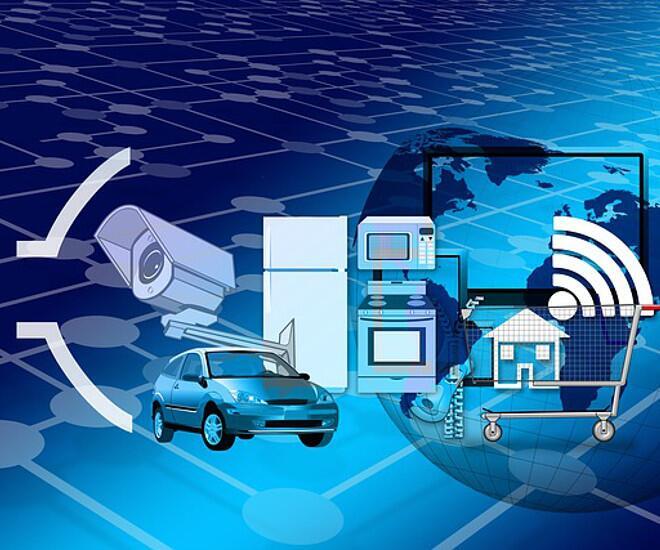Gateway to IoT innovation
Article By : Juergen Lampert

Massively increased connectivity and democratisation of technology are energising companies to investigate the development of IoT applications and new possibilities.
We are fortunate to work in such a dynamic industry and especially so in the nascent phase of the Internet of Things. Certainly these are challenging times for all with strong competition, increasing price pressures and compressed margins, and those operating in distribution markets are not exempt. However, these challenges are at least partially offset with a ream of opportunities from new entrants – from large industrial companies to start-ups and the fast emerging maker community – all looking to do innovative things with electronics.
A major driver in our industry today is of course the Internet of Things (IoT). Virtually all the major silicon vendors are bringing out new wireless microcontrollers and sensor-loaded development boards for the development of IoT end-point and gateway solutions. Massively increased connectivity, and the ‘democratisation’ of technology that is providing easier access to hardware and software, is energizing companies across virtually all market sectors and also many communities to investigate the development of IoT applications and new possibilities.
Technology confluence
The IoT is being enabled by a confluence of different technological and market factors including: greater network connectivity; the emergence of low-power wireless products and technologies such as RF microcontrollers and communications standards such as BLE (Bluetooth Low-Energy); highly competitively priced sensors and boards for smart-sensor end-point devices and communication gateways; and increasing cloud connectivity and services.
As an easy introduction to the IoT, there is now a veritable feast of development boards available that pre-integrate short-range wireless such as BLE or Wi-Fi as well as Ethernet. The new Raspberry Pi 3 is just one example of integrated communications coming as standard now for IoT application development, but there are many others including the Arduino-based Genuino 101 from Intel or the Arrow SmartEverything IoT development board.
Microcontroller-based wireless development boards and kits cost little these days, and certainly not the hundreds of dollars of perhaps just a few years ago. These increasingly powerful boards means that companies no longer need large budgets to develop new electronics technologies. More than this, it is also enabling communities to develop new IoT applications. An example happening now is the crowd-sourced use of low-cost sensor-based wireless boards, in conjunction with the LoRaWAN IoT network in Reading, for various smart-city-based applications such as monitoring flood defences.
Long-range wireless narrowband communications networks such as SIGFOX and LoRaWAN are starting to make a significant impact in the enabling of IoT applications. The relative low cost of technology – such as LoRaWan boards from Microchip as one example of many – is enabling this level of participation.
Industrial IoT
From a distribution point of view, we are also seeing increasing introduction of new companies – or at least those that are not traditionally associated with electronics development – looking to do new things with electronics. This is especially the case in industrial automation. The sector comes with decades of legacy systems and equipment, but the opportunity for manufacturing and process control industries is to achieve the vision of the ‘Industry 4.0’ smart factory via the interconnection of formerly unconnected systems and processes and the leveraging of services offered by the cloud.
A key application for industrial automation companies is predictive and preventative maintenance, leading to lower equipment downtime. Another targeted benefit is higher efficiency in industrial processes with more complex motor control or the introduction of more robotics, as well as lower energy usage to meet emerging energy-saving standards. Silicon vendors such as TI and Analog Devices are bringing out new and highly integrated real-time microcontrollers with embedded DSP for processing, sensing and control applications to address these types of opportunities in the industrial automation field.
Another major opportunity for distribution is also the replacement of parts with new devices that, for example, offer IP-based and/or Ethernet and EtherCAT connectivity for control automation applications, or sensors for the monitoring of operational processes and their environment. One highly innovative product is the groov system of hardware and software, which converts serial RS232/422/485 signals to Ethernet data for integration into IoT systems and provides a simple way to build and view a mobile operator interface to monitor and control devices, systems and equipment from a smartphone or tablet.
Again, the low-cost and availability of a wide range of wireless development platforms is enabling these types of companies an easy and low-risk introduction to electronics and IoT application development. They provide a relatively simple place to start for companies without a large repository of electronics know-how.
There is another important trend that is changing our industry and how distributors address their customer base: that of technology democratisation. Find out about it on the next page.
Next: Democratisation eases access to hardware, software »
Subscribe to Newsletter
Test Qr code text s ss


